In a world where a new gun owner doesn’t have the time to digest all there is to know about building an AR, there are available options that come ready-to-go. Gun folks refer to this term, “out-of-the-box,” meaning you can take the firearm out of the box and put an optic or sights on and go shoot it. Stag Arms released its SPCTRM, which fits this description aptly.
There are two types of the AR-consumer market I think should consider this rifle: first, the new gun owner and second, those who know that subtle differences matter. If you are a brand new gun owner and your family’s safety is a priority, and you want a firearm you can unbox and use immediately, you’ll read below why Stag’s SPCTRM makes sense. And if you have a sophisticated taste in your AR rifles, consider that there are degrees of quality, and truly top-notch rifle builds have shades that define them – then, Stag puts those shades together for you.
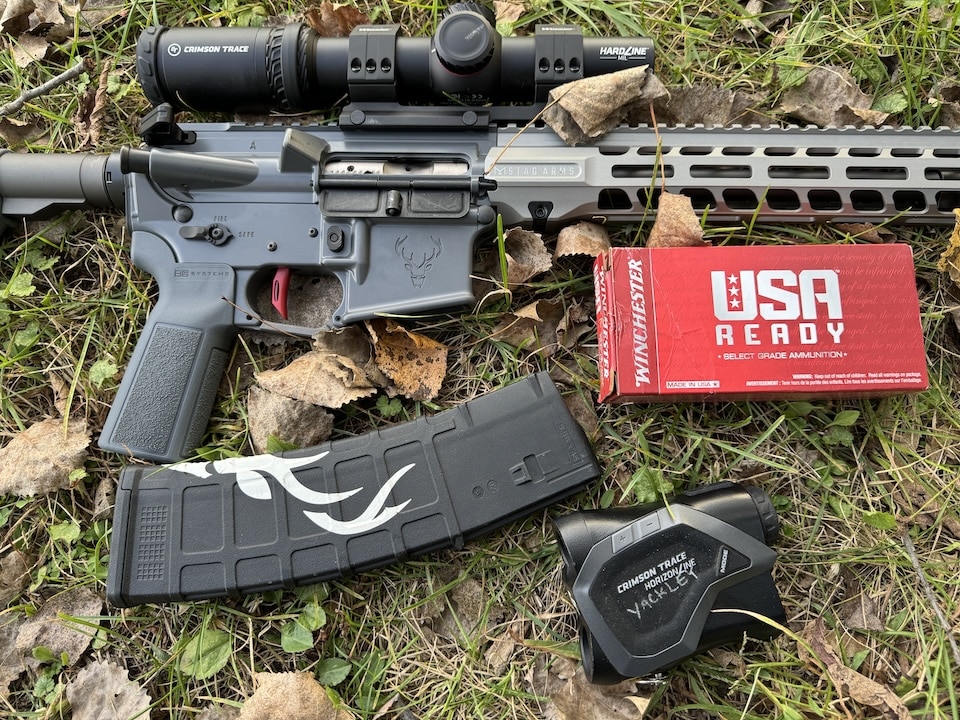
First, this rifle is Stag’s SPCTRM series, which stands for: Special Tactical Rifle Makeup. The acronym is a lot less of a mouthful than the full name. But, the idea is that a customer can have a rifle that comes in shades of gray, FDE (flat dark earth), or olive drab (green). Why does this matter? It’s a thoughtful design element, aimed at giving the customer a “custom” look without the price tag of a custom paint job.
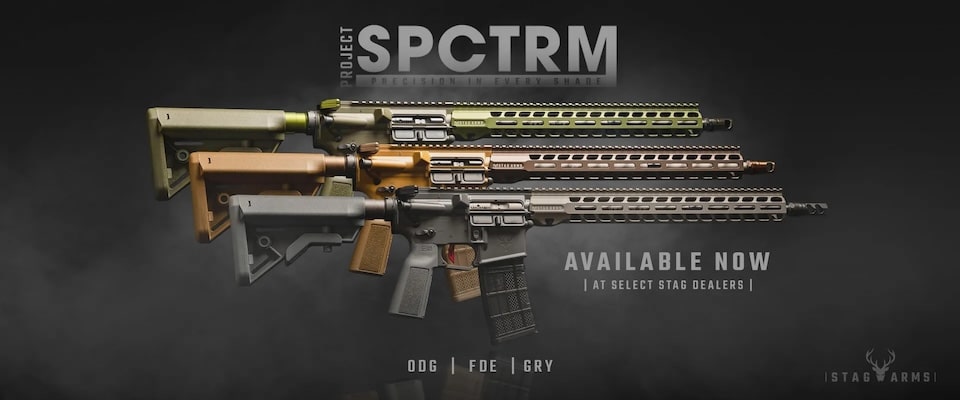
Note: SPCTRM rifles are available in both right- and left-hand offerings, the lefty offering being what Stag is known for as a brand.
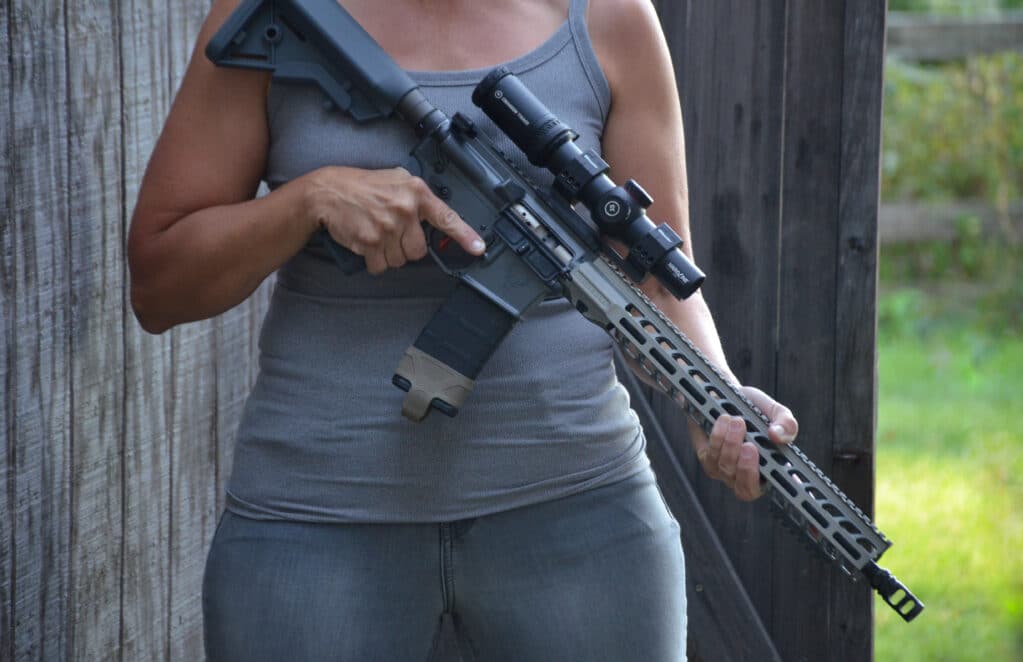
The muzzle device is an upgrade from what you would find on many out-of-the-box ARs, and it’s going to help that new gun owner who doesn’t want to research muzzle devices to keep the muzzle on target firing multiple shots. One big advantage to this brake, according to Stag Arms, is that if you wanted to do anything to your gas system, “Its outside diameter of .745 inches allows you to install and service your gas system without removing the muzzle brake.” This facet won’t matter much to a new gun owner, but if you like an adjustable gas system or want to tinker with your setup, this feature saves time.
Of the items that I personally appreciate about this rifle, the Slimline handguard and the feel of the action are two that stand out.
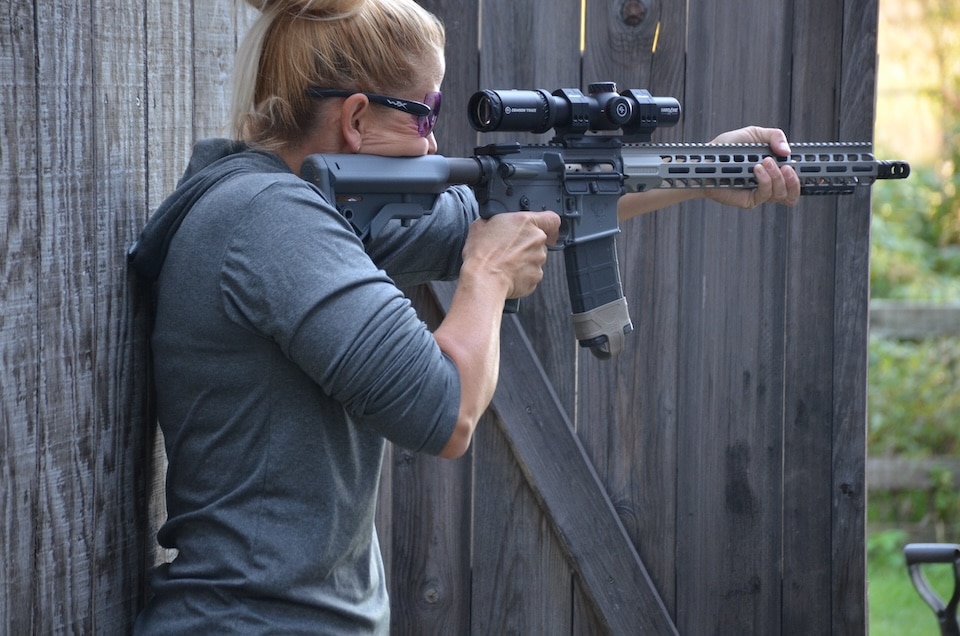
I don’t have particularly small hands, but the handguard is slim and I find it easier to C-clamp onto support with the smaller diameter. This makes it appealing to those without giant hands, especially novice shooters. The more manageable size also leads to less fatigue in your gripping hand, if you are, say, carrying the rifle while walking long distances. If you were to take this rifle hunting, bracing off the side of a tree or a deer stand wall is easier with a smaller diameter handguard.
I’ve seen a couple people spout off that this Slimline design is just missing a rail on the bottom. Having used something like that for three years, I can say I prefer no rail and just mounting a section of picatinny rail where I want it. The rail on the bottom used to chew up my hand when mounting off support, especially under recoil. And if you’re transitioning from target-to-target on something that doesn’t like the “teeth” of a rail along the entire bottom of the handguard, it can make your movement and recovery from recoil feel really slow and choppy. So this is another plus for the design in my book.
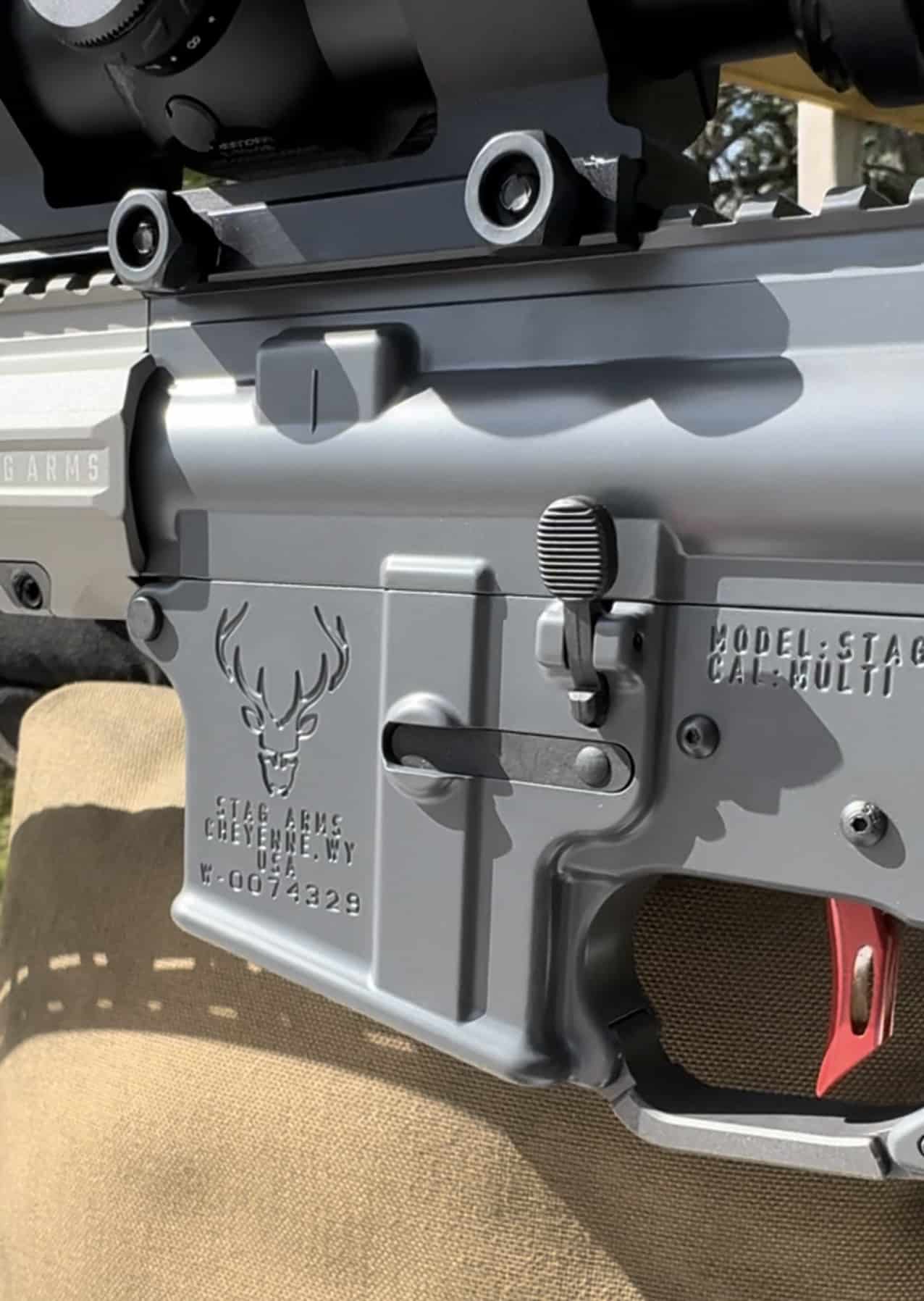
The action feeling smooth is another positive. Often a new rifle feels like the moving parts need to break in. (Read this as: you will feel dragging and scraping as you pull the charging handle and work a new rifle through manipulations.) AR-15s are essentially a buildable system; you can buy all different brands and grades of components and put them together to build a gun, but they might not always feel great. Depending on the quality of the parts and fit, as well as the tolerances accepted by the particular manufacturer – and even the person physically putting the rifle together – you might have something less enjoyable to manipulate.
This is the third Stag Arms’ SPCTRM rifle I’ve worked with where the rifle feels smooth and ready to go, which is another big plus. While you can find budget-priced ARs that are “out-of-the-box ready,” you won’t likely find one that feels this nice.
With any rifle, a customer wants accuracy. The groups I shot with factory ammo were another check in the plus column for the SPCTRM. I was able to get two-inch groups at 100 yards with factory 77-, 62- and 55-grain ammo.
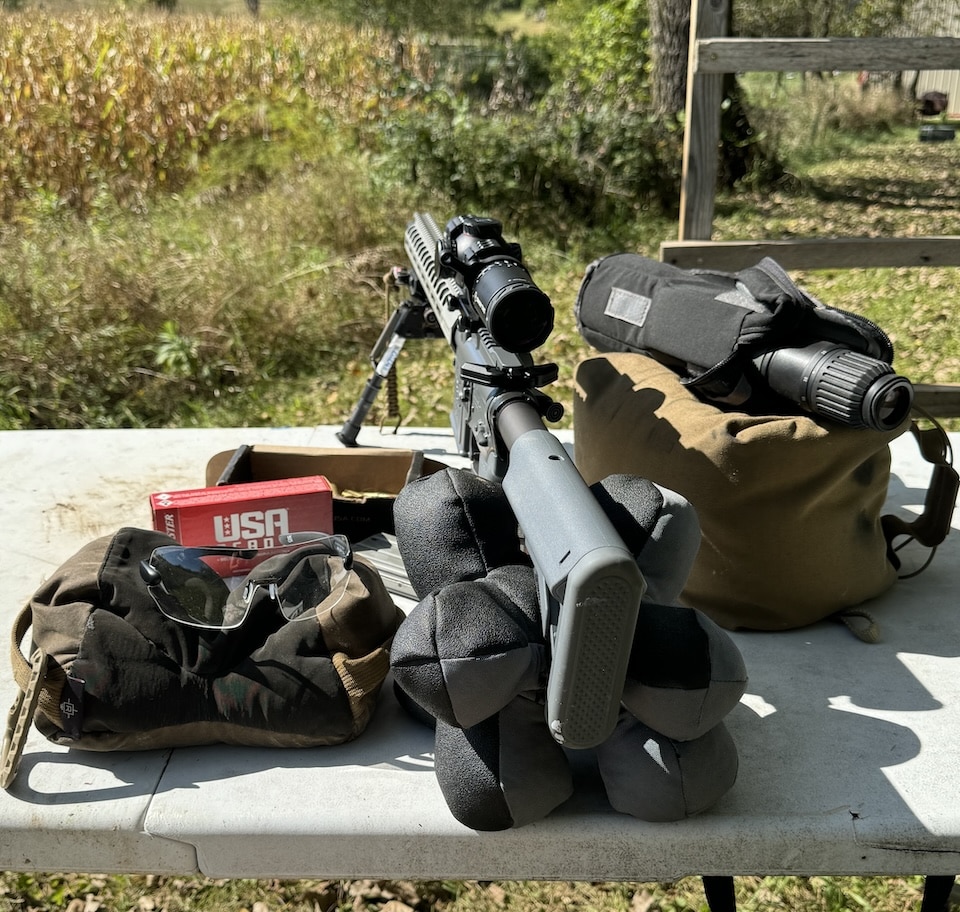
Out to 200 yards, this barrel, like other Ballistic Advantage barrels I’ve shot, really likes the 62-grain, open tip from Winchester that I shoot a lot. As compared to 77-grain SMK handloads (with which we’ve been getting an SD of 5 from), the 62 grain just performs better in this 1:7 twist. Out past 250 yards, the wind wins the battle of wind versus barrel twist and I’d shoot 77s.
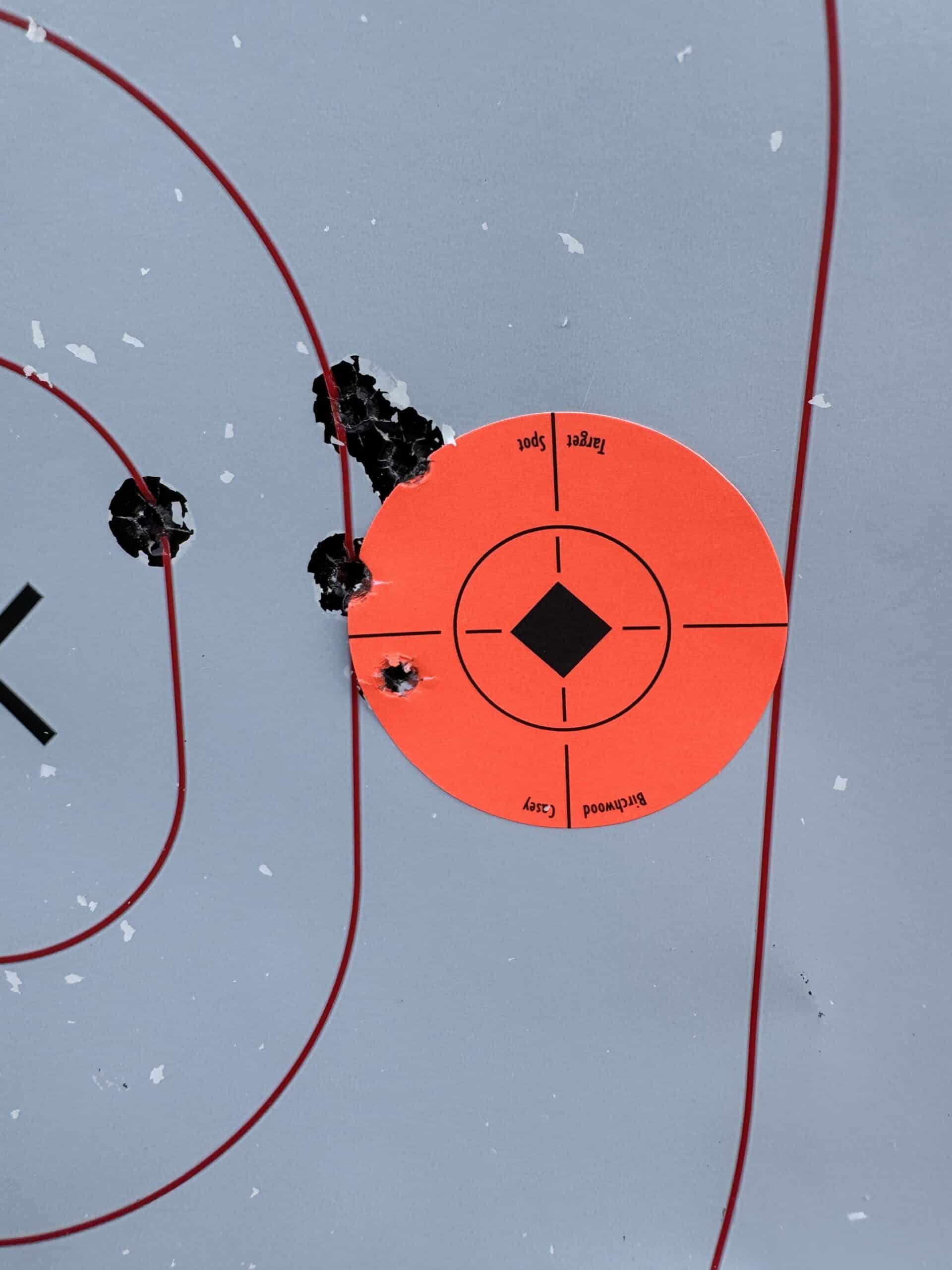
I saw one gun writer out there calling the accuracy from the SPCTRM, “minute of prairie dog,” which is a great way to describe the rifle’s lethality. I was hitting a 6-inch steel plate at 200 yards reliably enough to say you could use this to shoot a competition, no problem.
While the MSRP is $1,799, it’s much less than what you’d pay for a custom rifle with all the bells and whistles this one offers. An online broker had one selling for $1,399. I’d personally look around if I was shopping; sometimes, you’ll find them in stores for less than MSRP.
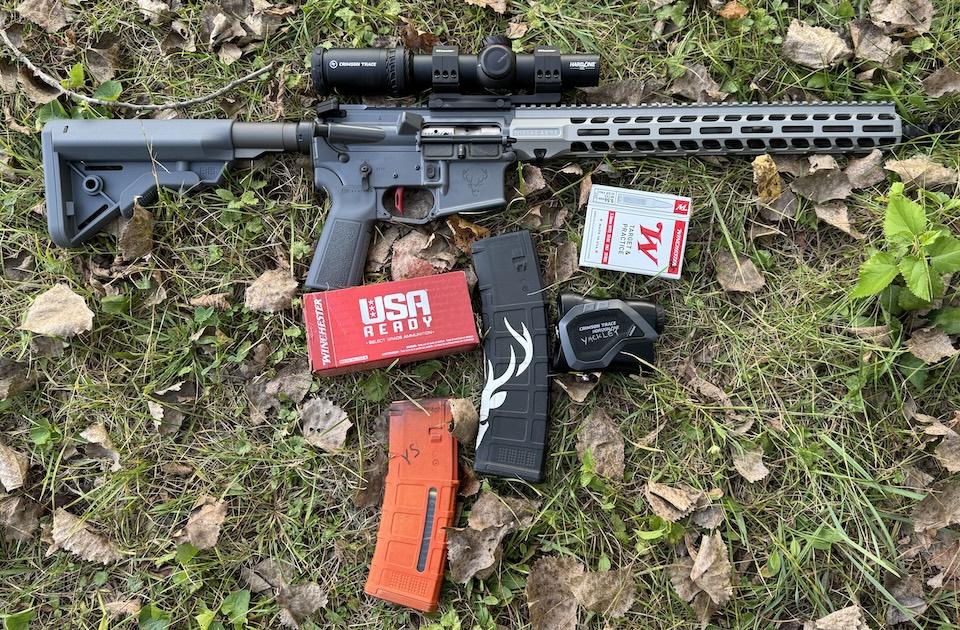
In the end, deciding to buy a rifle forces you to consider what’s important about a solid rifle. For me, that’s the quality of the build, and accuracy that results from it. Stag Arms hits that with the SPCTRM and adds looks, feel and details above-and-beyond a “basic” AR.
Learn more about the Stag Arms SPCTRM here.
Becky Yackley primarily competes in 3 Gun, USPSA, Bianchi pistol, but has competed in shooting since 1989 in disciplines from service-rifle, to NCAA Air Rifle and Smallbore, air pistol and a little bit of long range rifle. She shoots guns and cameras at competitions around the country, and writes in her fictional spare time. View all posts by Becky Yackley